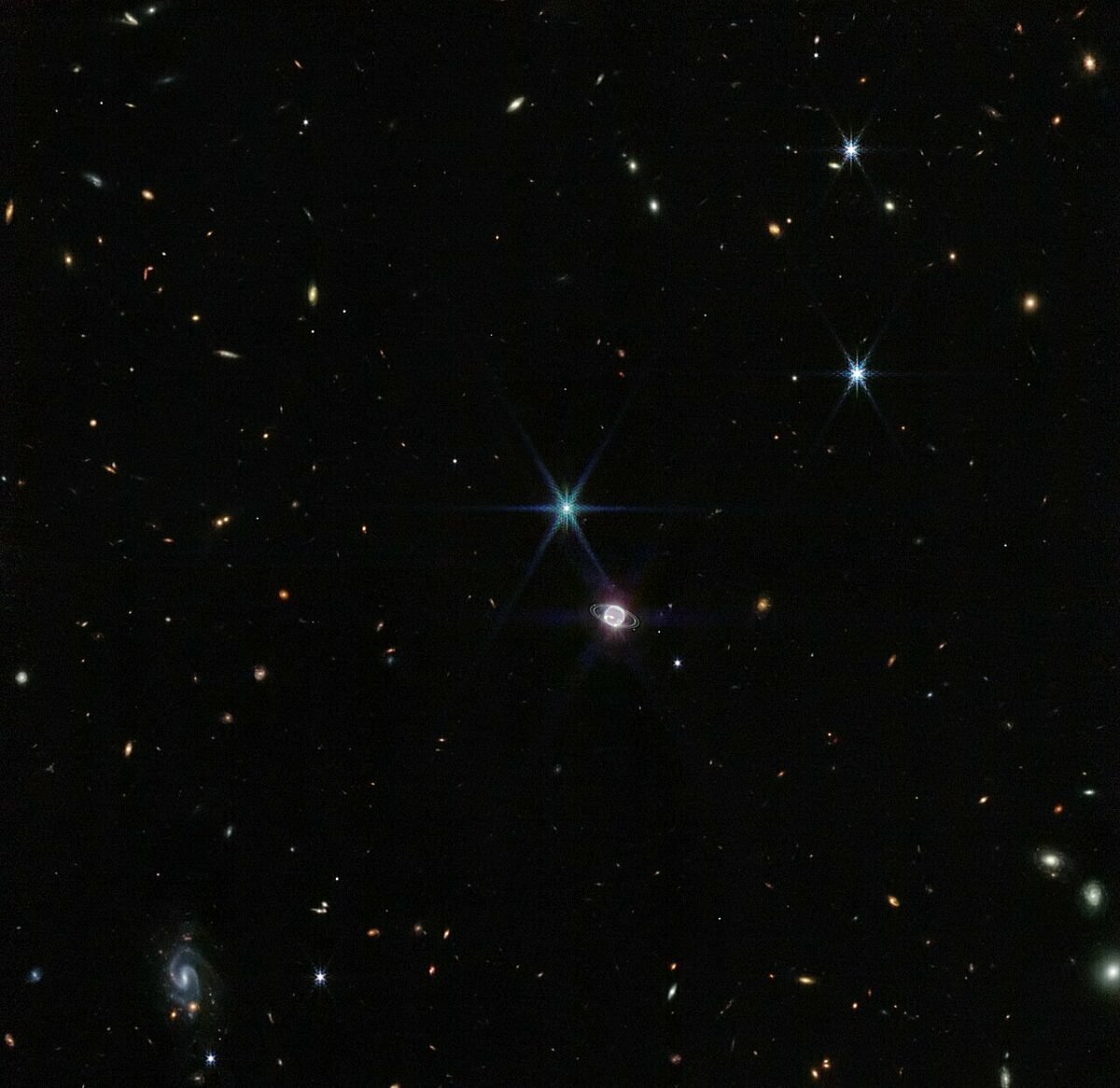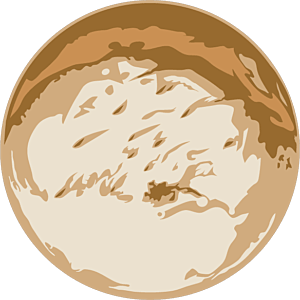The Downlink • Sep 23, 2022
Brighten up your day
Space Snapshot

NASA’s JWST spacecraft continues to show off its impressive abilities for imaging objects within and beyond our Solar System. This latest Near-Infrared Camera image shows Neptune, with its rings clearly visible, along with its moon Triton (the bright, blueish object to Neptune’s upper left). To make the image even more impressive, an abundance of distant galaxies can be seen in the background. The JWST team also released a close-up of Neptune and its rings.
You love space, now take action
This weekly newsletter is your toolkit to learn more about space, share information with your friends and family, and take direct action to support exploration. Anyone can subscribe at planetary.org/connect to receive it as a weekly email.
Mission Briefings


JWST’s first observations of Mars captured insights into its atmosphere. The space telescope took its first look at the red planet this month, taking images and spectroscopic measurements (pictured). Analysis is still underway, but so far researchers have already been able to gain insights about Martian dust, icy clouds, the types of rocks on the planet’s surface, and the composition of the atmosphere. Image credit: NASA et al.

France is increasing its space spending by 25%. French Prime Minister Élisabeth Borne announced that the government plans to invest more than 9 billion euros ($9 billion USD) in its space activities over the next three years, an increase of about 25% over the past three years. France is a member of the European Space Agency, which is also looking to significantly increase its overall budget.

NASA is seeking lunar landers for future Artemis missions to the Moon. The agency’s existing contract with SpaceX includes lunar landing demonstrations as part of the Artemis III mission, which is expected to take place no sooner than 2025. They are now calling for other proposals for technology to take crews to and from the surface on further missions.
From The Planetary Society


The countdown is on for the DART mission’s impact with an asteroid. On Sept. 26 at 7:14 p.m. EDT (23:14 UTC), DART, the Double Asteroid Redirection Test, will plow into the asteroid moon Dimorphos. Find out what to expect from this mission milestone, and watch the live coverage with us. Plus, listen to this week’s Planetary Radio for an interview with Nancy Chabot, coordination lead for DART. Pictured: An artist’s impression of DART approaching Dimorphos, the moon of asteroid Didymos. Image credit: NASA/Johns Hopkins APL.

China is developing a Mars sample return mission called Tianwen-3. The mission calls for a pair of launches in 2028 that would return a sample to Earth in July 2031. If successful, Tianwen-3 would be the first-ever robotic delivery of Mars samples to Earth. Learn more about this exciting mission.

Get ready for International Observe the Moon Night! Saturday, Oct. 1 marks the global celebration of our planet’s cosmic companion. Check out the official website for Moon-watching activities, educational resources, and a live-streamed event.
What's Up

Jupiter will be at opposition on Sept. 26, meaning it’s on the opposite side of the Earth from the Sun. This also means it will be approximately at its brightest, and will rise around sunset and set around sunrise. By sunset Saturn will already be high in the night sky, looking yellowish. Mars rises a little later in the evening, looking reddish. Learn more at planetary.org/night-sky.
Last chance! Be a Planetary Academy backer on Kickstarter

The campaign to kickstart Planetary Academy, our new kids membership program, closes next week, so don’t hesitate to become a backer! By supporting this project you’ll get a membership for the young explorer in your life, as well as other special rewards. Help open up the Cosmos for the next generation with Planetary Academy!
Send us your artwork!
We love to feature space artwork in the Downlink. If you create any kind of space-related art, we invite you to send it to us by replying to any Downlink email or writing to [email protected]. Please let us know in your email if you’re a Planetary Society member!


 Explore Worlds
Explore Worlds Find Life
Find Life Defend Earth
Defend Earth



